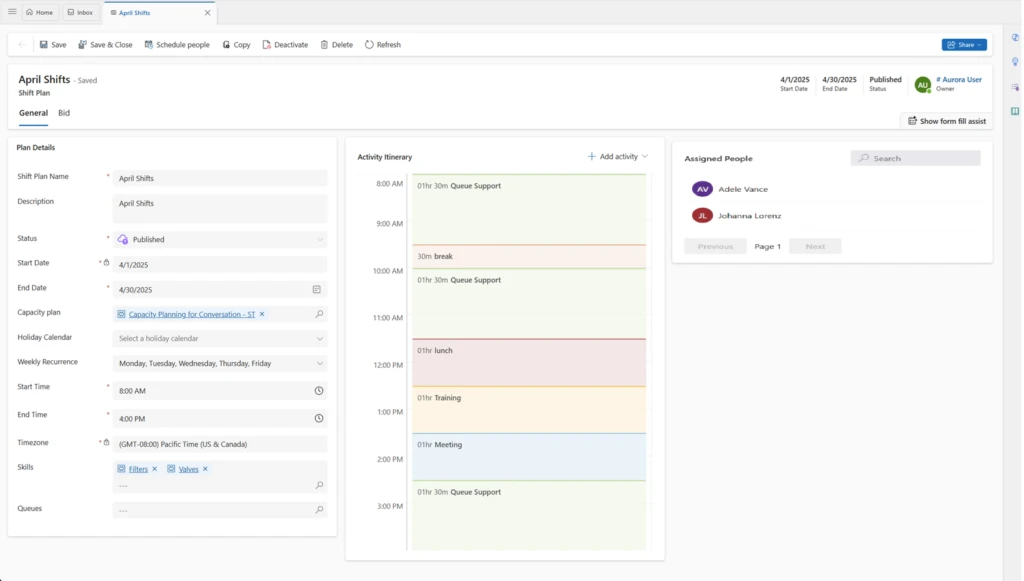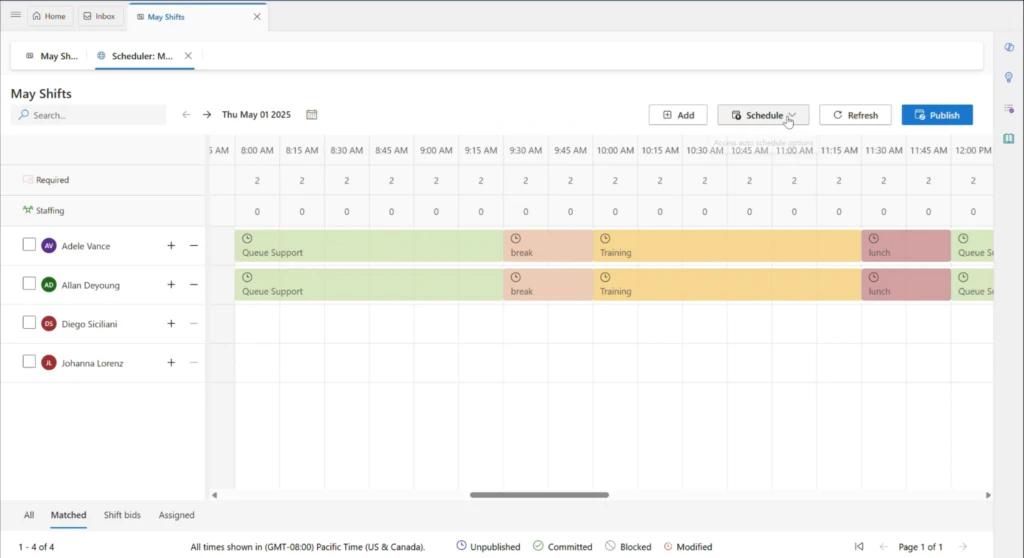This article is contributed. See the original author and article here.
Managing workforce availability efficiently is essential for delivering consistent and high-quality customer service. A well-structured shift planning and scheduling process ensures service representatives are assigned to the right shifts at the right time. This helps businesses maintain optimal service levels while balancing service representative workload. By defining shift structures, aligning staffing with demand, and ensuring fair scheduling practices, organizations can improve workforce efficiency and enhance service quality.
Create shift templates with shift planning
Shift planning forms the backbone of workforce management. It helps businesses organize shift structures, define coverage requirements, and ensure the right service representatives are available. A clear and well-defined shift plan minimizes coverage gaps, reduces scheduling conflicts, and improves operational efficiency.

Key benefits of a shift plan include:
- Align staffing with capacity plans: Ensure shift coverage aligns with forecasted service demand by scheduling the right number of service representatives at the right time.
- Assign the right skills to the right shifts: Match service representatives with the required expertise to ensure optimal performance across different customer interaction channels.
- Structured shift activities: Organize shift time effectively by incorporating work periods, training sessions, scheduled breaks, and lunch intervals. This structure helps optimize service delivery while ensuring employee well-being.
- Comprehensive shift calendars: Set operational parameters, including shift days, working hours, and time zones, to ensure alignment with business requirements and global workforce operations.
Ensuring workforce efficiency with seamless scheduling
Once shift plans are in place, scheduling ensures service representatives are assigned efficiently to maintain business continuity. An organized scheduling process helps businesses allocate resources effectively, adapt to changing needs, and maintain fairness in workforce management.

Key benefits include:
- Automated scheduling for quick assignments: Generate schedules in bulk based on predefined shift plans and workforce requirements, ensuring efficient allocation of resources.
- Flexible manual scheduling: Assign service representatives to shifts manually, allowing for adjustments based on real-time operational needs and individual preferences.
- Break distribution for continuous service: Balance workload by strategically distributing breaks across service representatives, preventing service interruptions while maintaining coverage.
- Adaptability for changing needs: Easily adjust schedules to accommodate last-minute changes, or unexpected fluctuations in service demand.
By using Dynamics 365 Contact Center’s shift plan and scheduling, businesses can ensure smooth operations, optimize workforce utilization, and provide better service experiences. A well-organized shift structure helps service representatives stay productive and engaged while ensuring that customer support remains uninterrupted. With a strategic approach to planning and scheduling, organizations can balance efficiency with flexibility. Consequently, they foster a more structured and effective service operation.
Learn more
To learn more about agent shift planning and scheduling in Dynamics 365 Contact Center, read the documentation: Create and schedule a shift plan | Microsoft Learn
The post Shift planning and scheduling in Dynamics 365 Contact Center appeared first on Microsoft Dynamics 365 Blog.
Brought to you by Dr. Ware, Microsoft Office 365 Silver Partner, Charleston SC.


Recent Comments